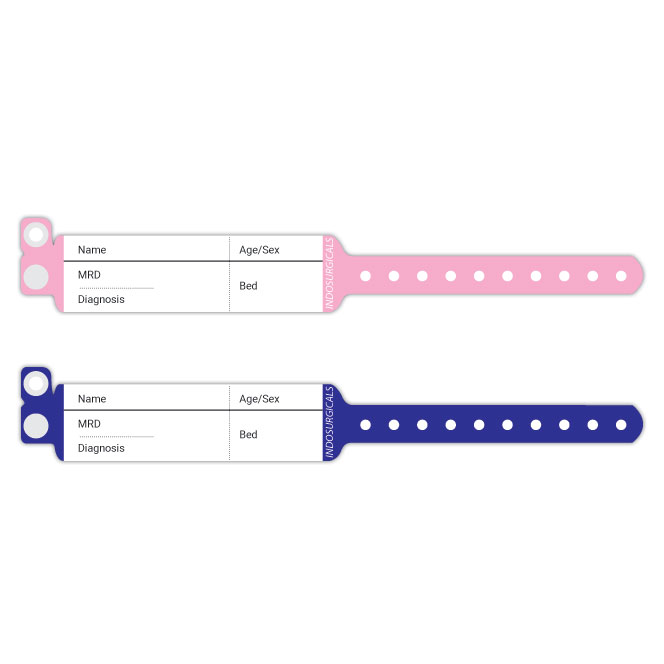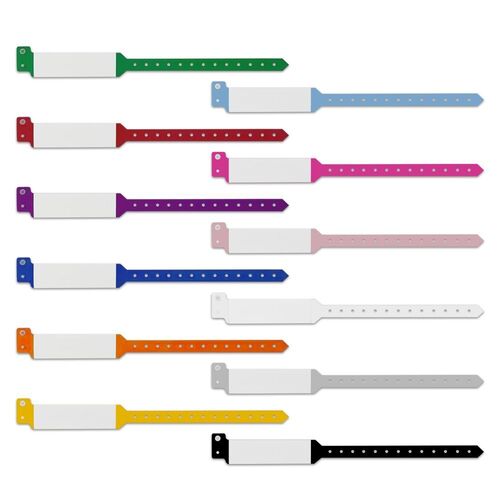The Connection Between a Patient Identification Band and Enhanced Patient Privacy
The Connection Between a Patient Identification Band and Enhanced Patient Privacy
Blog Article
Checking Out the Different Sorts Of Patient Identification Band Utilized in Medical Facilities
In the detailed world of health care, the crucial function of Patient Identification bands usually goes unnoticed. These bands, varying from straightforward paper wristbands to sophisticated RFID bands, form the backbone of Patient safety and security methods, making sure precision in Patient Identification. Yet, the huge variety of these bands, each with its unique benefits and restrictions, is frequently overlooked. As we browse with this subject, one may gain understanding right into the refined complexities and vital significance of such bands in medical centers.
Recognizing the Relevance of Patient Identification Bands
While they might seem like mere accessories, Patient Identification bands play an essential function in clinical centers. These bands offer as an essential tool for confirming Patient identity, stopping clinical mistakes connected to misidentification. Patient Identification bands likewise aid in improving administrative jobs, ensuring exact record-keeping and invoicing.
Standard Paper Wristbands: Their Use and Limitations
Standard paper wristbands have been a staple in Patient Identification across various clinical centers. While their use is extensive, they harbor particular constraints that might impact their efficiency in Patient administration. This section will certainly focus on the extent of their application and the intrinsic disadvantages related to their use.
Paper Wristbands: Usage Scope
In the realm of Patient Identification, paper wristbands have long held an essential duty. These bands are normally made use of in outpatient settings, where the Patient's stay is short-lived. The wristbands include necessary information such as the Patient's name, date of birth, and an unique Identification number. This straightforward, yet effective system, enables doctor to rapidly and accurately identify patients, ensuring the appropriate treatment is administered. Paper wristbands are likewise made use of in emergency circumstances, where quick Identification is critical. Their use expands to events like blood donation drives and mass inoculation programs, even more stressing their versatility. Despite innovations in modern technology, the modest paper wristband stays a reliable and economical remedy for Patient Identification in numerous healthcare scenarios.
Limitations of Paper Wristbands
Regardless of their extensive usage, paper wristbands are not without their downsides. Their physical sturdiness is among the considerable restrictions. Exposure to water, sweat, or rough handling can make them unreadable or perhaps trigger them to break down. Additionally, paper wristbands commonly do not have the technical capacities of even more contemporary alternatives, such as barcoding or RFID chips, limiting their capability to simply showing composed information. The inability to update or modify the data on the wristband is another drawback. If the details is transcribed, clarity can be compromised, leading to potential misidentification. Paper wristbands can trigger pain or skin inflammation to some clients, especially when put on for prolonged periods.
Barcoded Wristbands: Developments in Patient Identification
While Patient Identification has long been an important element of health care, the introduction of barcoded wristbands represents a considerable leap forward. These bands leverage the simpleness of barcoding modern technology, enabling for Patient details to be rapidly checked and accessed. They improve the speed and precision of Patient Identification, reducing the risk of clinical mistakes connected to misidentification.
Radio Regularity Identification (RFID) Bands: a Step Towards Futuristic Healthcare
The development of Patient Identification bands has actually brought concerning the appearance look here of Radio Regularity Identification (RFID) Bands (patient identification band). These ingenious devices present key advantages for healthcare facilities, using an extra reliable and technologically advanced methods of Patient Identification. The implementation of RFID in health care is a substantial action in the direction of a more advanced strategy to Patient administration and security
Understanding RFID Bands

RFID Bands: Secret Advantages
Mainly, these bands improve Patient safety by providing exact, immediate Identification, thus reducing clinical errors. RFID bands can save a large amount of Patient data, including clinical history and allergies, enabling personalized care. In general, RFID bands stand for a significant development in Patient Identification modern technology, benefiting both people and medical care carriers.
Executing RFID in Health Care
As we enter a highly sophisticated period, the execution of RFID bands in medical care comes to be significantly vital. These bands provide a seamless way to track and identify patients, ensuring their safety and improving effectiveness in treatment procedures. RFID bands provide various advantages over conventional Identification methods. They can keep a huge quantity of data, including the Patient's medical history and therapy plans, which can be quickly accessed by healthcare providers. This data aids physicians make educated decisions regarding the Patient's therapy strategy. RFID bands minimize medical errors by offering accurate Patient Identification, which is important in avoiding misdiagnosis or wrong medication management. Hence, the execution of RFID bands is a considerable action towards enhancing Patient security and medical care distribution.

Color-Coded Wristbands: Aiding in Quick and Accurate Medical Diagnosis
In view it the dynamic setting of a clinical center, color-coded wristbands have actually arised as essential devices for swift and exact Identification of a client's medical condition. These wristbands, used by individuals, bring certain shades that match to different clinical conditions or statuses. Red might show allergy risks, while yellow could represent an autumn threat. This system is created to use instant aesthetic hints to doctor, enhancing Patient safety and care top quality. In emergency scenarios, making use of these wristbands enables fast decision-making. Nonetheless, the efficiency of color-coded wristbands depends on the harmony of shade interpretation across health care organizations, requiring typical standards for constant application.
Techniques for Reliable Execution and Management of Patient ID Bands
Attaining optimum use of Patient Identification bands demands a well-structured technique for their execution and management. The initial step includes training all health workers on the value of appropriately applying and reading these bands. Medical facilities must systematize the use of ID bands across all divisions, guaranteeing harmony and decreasing discrepancies. Routine audits ought to be performed to validate adherence to plans and to correct any kind of incongruities. Patient education and learning is also vital; people must comprehend the function of the bands and the requirement for their consistent wear. patient identification band. Lastly, it's essential to have a back-up plan in position, such as barcode scanning or biometrics, to make certain that Patient Identification is never ever endangered.
Verdict
Patient Identification bands are important in clinical centers to ensure safety and precision. Standard paper, barcoded, RFID, and color-coded wristbands each hold unique advantages, ranging from cost-effectiveness to advanced data storage and immediate clinical signals. Efficient application and management of these bands can substantially reduce clinical mistakes, enhance efficiency, and enhance total Patient care. Therefore, understanding and using these Identification devices is vital for keeping high requirements in health care.
These bands, differing from simple paper wristbands to sophisticated RFID bands, form the backbone of Patient security procedures, making certain accuracy in Patient Identification.The evolution of Patient Identification bands has actually brought concerning the appearance of Radio Frequency Identification (RFID) Bands. On the whole, RFID bands represent a substantial innovation in Patient Identification modern technology, profiting both people and healthcare providers.
RFID bands reduce clinical mistakes by providing accurate Patient Identification, which is important in protecting against misdiagnosis or incorrect medication administration. Patient education is also essential; patients have to comprehend the purpose of check my reference the bands and the demand for their consistent wear.
Report this page